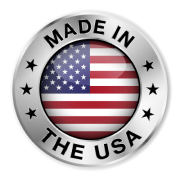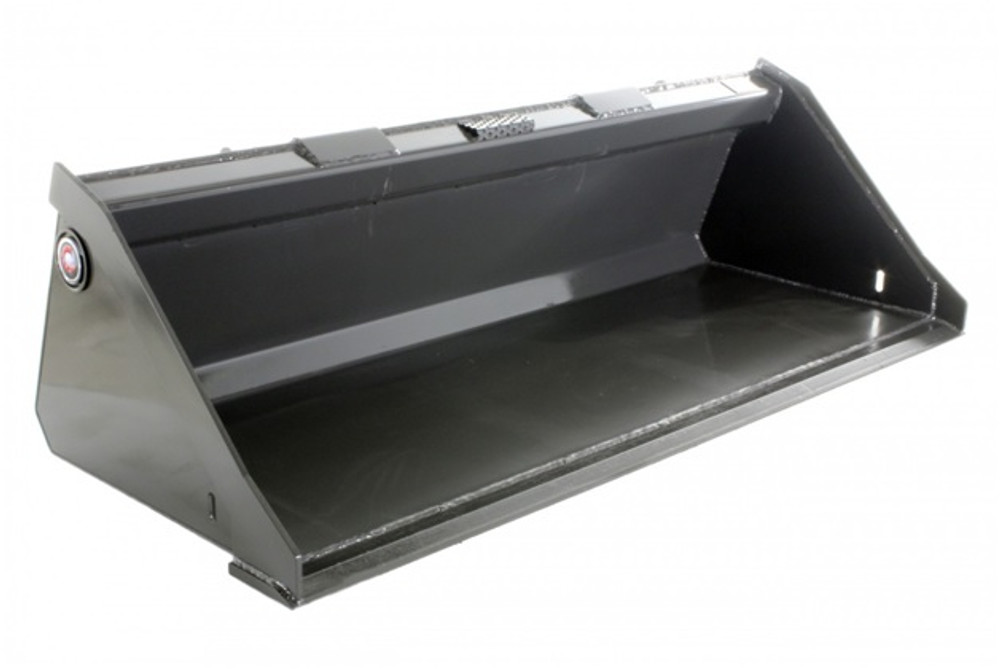Choosing the Right Skid Steer Bucket for Your Construction Projects
Posted by Lee Padgett on 13th Sep 2024
The skid steer loader. A true workhorse of the construction industry, it tackles a multitude of tasks with unmatched versatility. But even the most powerful skid steer loader needs the right tools to truly shine.
That's where skid steer buckets come in.
These purpose-built attachments transform your skid steer loader into a multi-functional machine, capable of handling everything from digging trenches to loading materials.
However, with a variety of skid steer bucket types available, choosing the right one can feel overwhelming if you’re not familiar with the different varieties.
That’s why, in this post, we’ll equip you with the knowledge to select the perfect skid steer loader for any project. We'll delve into the world of low-profile buckets, long bottom buckets, track duty buckets, and snow & litter buckets, exploring their functions, strengths, and ideal applications.
Unveiling the All-Stars: Common Skid Steer Bucket Types
1. Low Profile Buckets: Kings of Efficiency
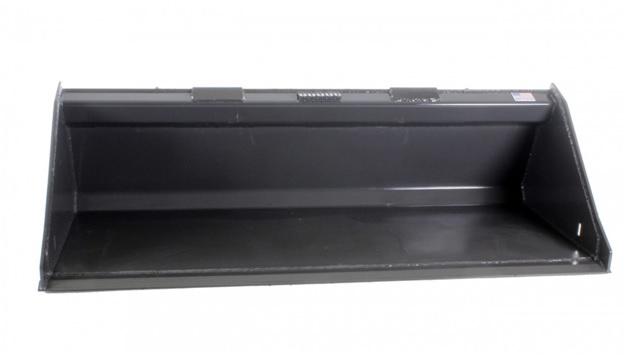
Imagine a skid steer bucket that excels at both loading and grading. That's the beauty of the low-profile bucket. Its shorter design, compared to standard buckets, keeps the center of gravity lower, enhancing stability during operation. This makes low profile buckets ideal for:
- Loading loose materials: The low profile allows for easier material entry, perfect for tasks like loading gravel, sand, or mulch.
- Grading and leveling: The straight cutting edge makes precision grading a breeze, ensuring a smooth and even surface.
- Working in confined spaces: The compact design allows for better maneuverability in tight areas.
2. Long Bottom Buckets: Reaching New Depths
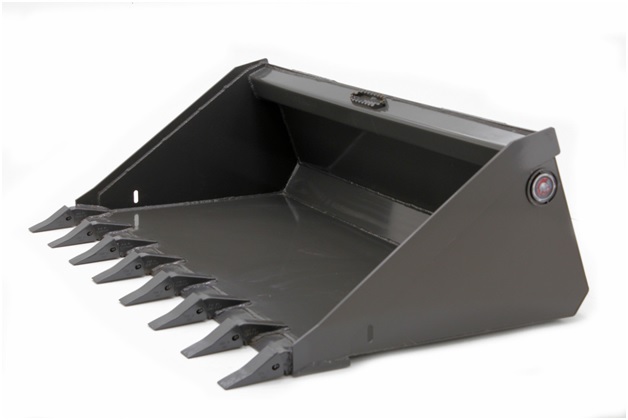
Need to dig deep trenches or reach under low-hanging obstacles? The long bottom bucket is your champion. Featuring a deeper profile than standard buckets, it allows for increased digging depth and superior reach. Here's where long bottom buckets excel:
- Trenching and excavation: The extended depth tackles tough digging jobs, ideal for utility line installation or foundation work.
- Demolition and site clearing: The long reach makes it easier to clear debris or reach materials piled high.
- Working under obstacles: The lower profile allows for digging beneath pipes, wires, or other overhead structures.
3. Track Duty Buckets: Built to Endure
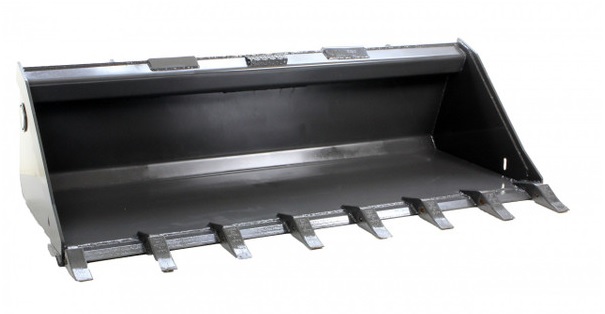
When the going gets tough, the tough get... track duty buckets! Designed for heavy-duty applications and harsh environments, these buckets boast reinforced construction and wear-resistant materials. Track duty buckets are perfect for:
- Demolition and material handling: The robust build tackles demanding tasks like breaking up concrete or handling heavy rocks.
- Landscaping and site clearing: The durability makes them ideal for clearing rough terrain or tackling stubborn root systems.
- Working with abrasive materials: The wear-resistant materials withstand the wear and tear of abrasive materials like asphalt or demolition debris.
4. Snow & Litter Buckets: Winter Warriors and More
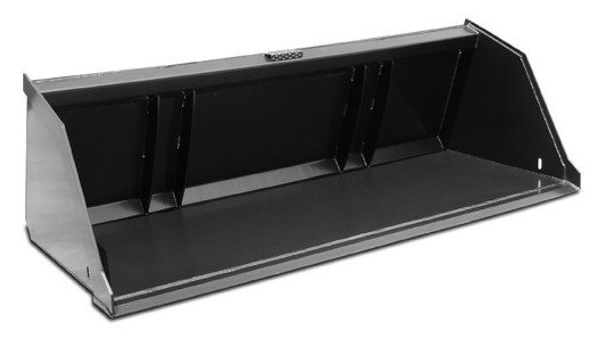
Don't let the name fool you! Snow & litter buckets offer year-round functionality. Their wide profile and high back wall make them perfect for:
- Snow removal: The wide design efficiently scoops and pushes large amounts of snow, clearing driveways, parking lots, or walkways.
- Material handling: The high back wall prevents loose materials like leaves, mulch, or light debris from spilling over.
- Light grading and leveling: The wide profile can be used for basic grading tasks, like spreading gravel or smoothing out uneven surfaces.
Choosing Your Skid Steer Loader: Matching Bucket to Project
Now that you're familiar with the key types of skid steer buckets, let's explore how to choose the right one for your specific project needs:
- Consider the task at hand: What primary function will the bucket serve? Loading, digging, grading, or something else entirely? Matching the bucket's strengths to the project's requirements is crucial.
- Consider the material you’re dealing with: What materials will you be working with? Loose materials like sand require a different bucket type compared to heavy rocks or demolition debris.
- Site conditions: Are you working in a tight space or on uneven terrain? The bucket's size and profile should accommodate the specific site conditions.
- Skid steer loader compatibility: Ensure the chosen bucket is compatible with the make and model of your skid steer loader. Refer to your owner's manual or consult with a skid steer specialist.
How to Maximize Skid Steer Performance
Equipping yourself with the right skid steer bucket is just the first step towards maximizing the potential of this versatile machine. Here's a deeper dive into how to achieve optimal performance, safety, and longevity from your skid steer loader and its attachments:
Mastering Skid Steer Handling:
- Pre-operation checks are essential: Before starting any project, develop a routine for checking tire pressure, fluid levels, and overall functionality of the skid steer loader and attachment. This proactive approach helps identify and address minor issues before they escalate into bigger problems.
- Safety first, always: Always wear a seatbelt and utilize proper personal protective equipment (PPE) like gloves, safety glasses, and appropriate footwear. Familiarize yourself with the skid steer loader's controls and emergency shut-off procedures.
- Slow and steady wins the race: Skid steer loaders are powerful machines, but avoid the temptation to rush. Maintain a controlled speed, especially when working on uneven terrain or slopes. Smooth and deliberate movements ensure operator safety and prevent damage to the machine or attachment.
- Mind your surroundings: Always be aware of your surroundings, including workers on foot, overhead obstacles, and potential hazards. Maintain a safe distance from bystanders and clearly communicate your movements when operating the skid steer loader.
Maintaining Peak Performance for Your Skid Steer:
- Follow the manufacturer's maintenance schedule: Refer to your skid steer loader's owner's manual for specific maintenance guidelines. This typically includes regular inspections of engine oil, air filters, hydraulic fluid, and greasing of pivot points.
- Keep it clean: Regularly clean your skid steer loader and its attachments, especially after working in harsh environments or with dusty materials. This prevents dirt and debris buildup that can hinder performance and lead to premature wear.
- Inspect for wear and tear: Pay close attention to signs of wear and tear on the skid steer loader and attachment, such as worn-out tires, loose connections, or damaged cutting edges. Address these issues promptly to avoid breakdowns and costly repairs.
- Store it right: When not in use, store your skid steer loader and attachments in a clean, dry, and protected location. This helps prevent rust, corrosion, and damage from harsh weather elements.
Building Success: The Right Bucket, Right Project, Right Partner
Choosing the right skid steer attachments is an investment in your project's success. By understanding the different types of buckets, their functionalities, and how to match them to your specific needs, you'll be well on your way to conquering any challenge.
At Spartan Equipment, we are your one-stop shop for all your skid steer needs. Our knowledgeable team can help you select the perfect skid steer attachments for your project, along with a wide range of compatible attachments.
Check out our vast catalog of skid steer attachments today and conquer any challenge on your next project!

